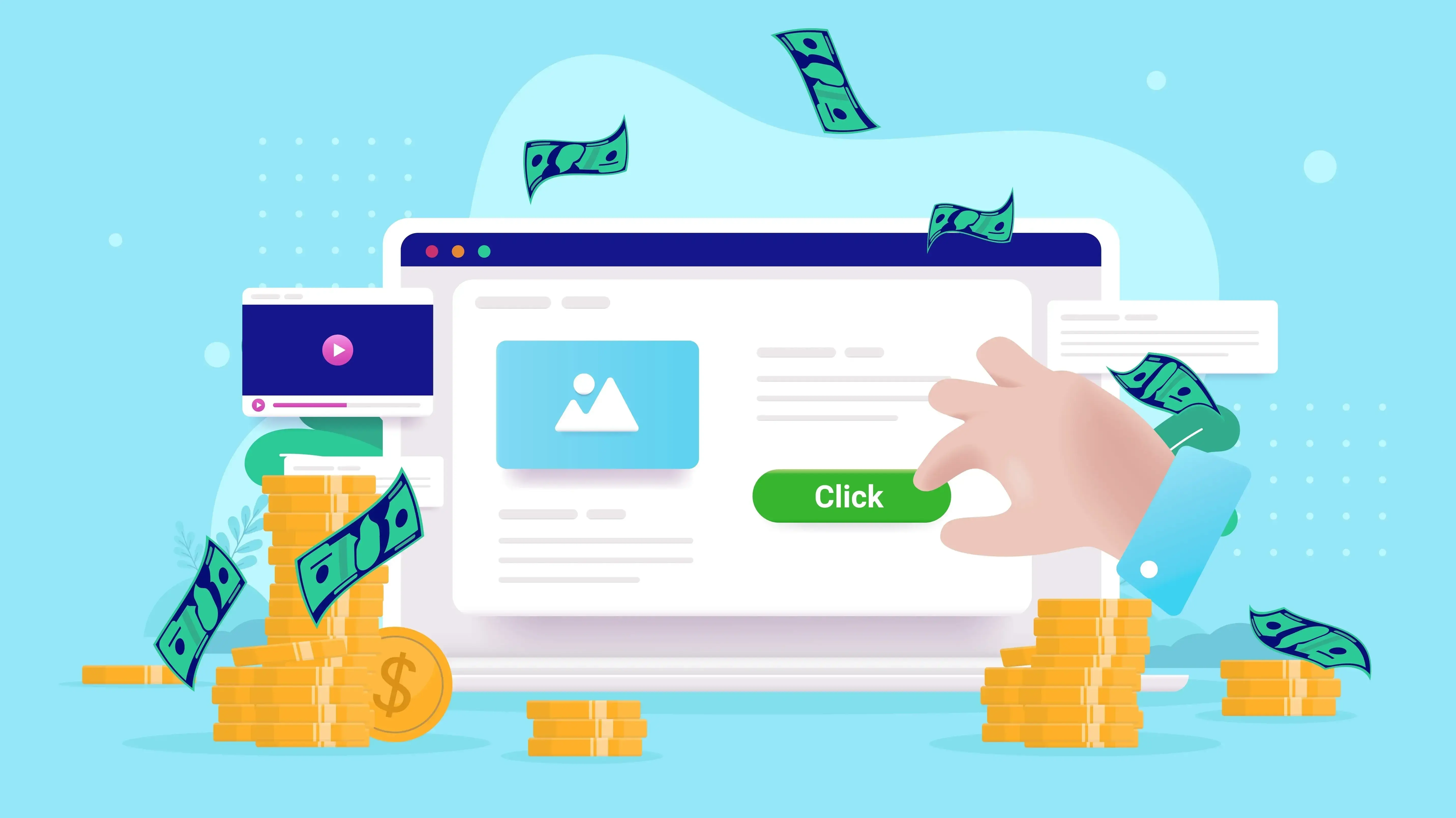Neuromarketing is an online marketing technique that uses the psychology of persuasion to encourage conversions. It includes the sciences of influence, persuasion, and decision-making. We can use this science in our digital marketing efforts to build our brands, increase sales, and turn customers into returning fans. In this post, we’ll look at digital neuromarketing to see how to use it for your digital marketing campaigns.
What is Digital Neuromarketing?

Neuromarketing is consumer research that uses marketing techniques developed using neuroscience. Neuromarketing provides high-quality answers that inform companies on how to use their marketing efforts to build relationships with customers. This includes relationship-building and customer retention strategies.
For more information about customer retention, see the article eCommerce Customer Retention: Best Strategies.
Neuromarketing comes from the study of neuroscience, which studies the behavior of consumers and their preferences, motivations, and decisions around the products they purchase. This study includes brain imaging methods and similar techniques to understand consumer behavior.
Neuromarketing uses consumer neuroscience, which focuses specifically on consumers. It uses marketing psychology, focusing on the human brain and behavior to influence preferences.
If you’re a digital neuromarketer, take a look at our hosting options for your website needs. You can build a website for your business and host websites for your clients through our reseller hosting services.
Neuromarketing Research

Digital neuromarketing is based on research from decades of research, which includes lots of body-related biometrics measuring techniques including the face, eyes, and brain. Let’s take a closer look at the types of measurements included in neuromarketing research and the effects they have on consumers.
Facial Expressions
Facial expressions reveal emotions. This allows marketers to adjust their marketing approach based on the emotions of the customer. Using methods that make the customer happy places them in a better mood to buy.
Eye Tracking
Eye movement shows what a person finds interesting. Patterns in eye movement, such as the rate of blinking, the amount of time the eyes remain fixed, scanning patterns, pupil size, etc., reveal how easy the information is to process or if the person enjoys the image.
Measurements are taken automatically and reveal if the person is having difficulty understanding the marketing input if they are engaged or disinterested, and the emotional impact.
EEG
EEG (Electroencephalography) is a measuring technique that measures brain activity to create images of the change in activity. This can help markets understand responses to their marketing materials.
fMRI
fMRI (functional magnetic resonance imaging) measures the blood oxygenation level-dependent signal (known as BOLD) in the brain. Active parts of the brain use more oxygen. Looking at these changes reveals the level of stimulus a marketing campaign can have on the brain.
Neuromarketing and Hormones

The effectiveness of a marketing campaign can be increased by focusing on the hormones in the consumer’s brain. This includes oxytocin, cortisol, and dopamine. All of these hormones work together to make us want something and to build an addiction. Marketers use these to their advantage in digital neuromarketing.
Let’s take a closer look at the hormones involved and see what they do in the mind of a shopper.
Cortisol
Cortisol is a stress chemical. It regulates blood sugar, our immune system, and our metabolism. A rise in cortisol reduces trust. This is bad for sales. Digital neuromarketers want to keep stress as low as possible.
This is often accomplished by offering answers to hard questions in the marketing materials. Remove the questions and make information easy to get. Chatbots are provided to answer any questions that arise. Videos show product demonstrations and testimonials to set the customer at ease and build their confidence in the product. These help in keeping the potential buyer calm and relaxed.
Oxytocin
Oxytocin is a trust chemical. This is triggered when the customer can make a connection and build a relationship with the brand. Once the brand has built trust, the customer’s brain releases the oxytocin chemical, putting them at ease in dealing with the brand.
Digital marketers take advantage of this in several ways. One of the most popular methods is making it easy for consumers to communicate with the brand. Communication builds positive emotions, which builds trust.
Other methods to build trust are customer testimonials, celebrity endorsements, high-quality content (including commercials and graphic design), offering coupons, teaming with other brands, sponsoring events, etc.
Dopamine
Dopamine is a reward chemical. It’s addictive and makes us want something so much that we go out of our way to get it. We feel good when we get it, but that only lasts for so long before we want something again. We become addicted to the feeling of getting what we want, and we continue wanting it again and again.
Dopamine works with the opioid system and gives us feelings of pleasure and enjoyment. Dopamine makes us want it and opioid makes us enjoy it.
Digital marketers use this need for dopamine to encourage customers to join memberships, subscribe to services, create wish lists, join newsletters, and lots more. anything that can provide instant satisfaction is great for increasing dopamine levels.
How to use Digital Neuromarketing

The information gathered from consumer neuroscience and neuromarketing informs companies of the best methods to sell to consumers and keep them coming back. It shows what people are thinking when they encounter marketing materials. This answers the questions of how to attract customers and turn them into life-long fans.
It also shows how people react to marketing within different contexts. This includes methods such as placing an item next to a similar item or placing the item by itself, seeing the product in person, seeing an image of the product, seeing the product in a video, encountering the product online, etc.
The end goal of digital neuromarketing is the same as any type of marketing: to increase sales and build a relationship with customers. Neuromarketing science principles can help digital marketers know how to improve their online digital marketing efforts. It works for any type of online marketing. Next, we’ll look at the main concepts of digital neuromarketing.
Digital Neuromarketing General Marketing Concepts

Digital neuromarketing includes a lot of areas of online shopping. Here’s a look at the basic concepts. We’ll look at a few concepts in more detail in the section following this.
Use Simple Fonts
Simple fonts encourage action. Fonts that are easy to understand without having to concentrate on the words stand out. This encourages customers to follow through with their message, including making a purchase. Simple fonts are great for CTAs (calls to action).
For more information, see the article What are Web-Safe Fonts?
Use Complex Fonts
Complex fonts are memorable. Fonts should always be legible, but fonts that stand out are easier to remember, making your marketing campaigns remain in customer's minds longer. Complex fonts are great for headings and large text that you want to stand out.
Use Color
Color draws the eye. Colors should be selected based on color theory and the mood you want to set, but there are lots of options for color and style.
For more information about color choices in marketing, see the articles Color Theory for Website Design and Best Color for eCommerce Website.
Show the Savings
Highlight the amount of savings. When customers see the amount of savings without having to look for it, they’re encouraged to purchase.
Create Scarcity and Deadlines
Create scarcity with a deadline. Showing the number of items in stock or a deadline with a countdown timer promotes FOMO and encourages buyers to buy sooner rather than later.
For more information about FOMO, see the article FOMO in Marketing.
Reduce the Number of Choices
Provide fewer choices. Too many choices can cause “analysis paralysis” and customers can’t choose. Reducing the number of options increases their ability to make a choice.
Simplify Online Ads
Online ads work better when customers don’t overanalyze them. The closer they pay attention, the more likely they are to move on to something else. This allows them to talk themselves out of making a purchase. Keep ads simple with a few words, a few colors, and simple images.
For more information about using ads, see the article Uncovering the Psychology Behind Why We Click on Ads.
Build Brand Loyalty
Digital neuromarketing uses brand loyalty to build strong connections with brands and place them in their long-term memory. If your current branding doesn’t work, don’t be afraid to rebrand.
Strong brands are often household names. Each of those household names has loyal customers who will fight for their brand. Even in smaller fields, where names are unknown outside of their industry, building brand loyalty can make your brand come to mind over your competition.
For more information about branding, see the article Brand Consistency in Web Design.
Be Entertaining
Consumers are more likely to read or watch something entertaining than a dry and boring info dump. Think of edutainment vs an infomercial. Many consumers watch edutainment and don’t think of the fact that it’s educational or that its purpose is to make a sale. Those same consumers would avoid the same information if it was in the dry form of an infomercial.
Include humor in your videos and other types of media to give customers a reason to engage with your marketing materials.
Digital Neuromarketing for Your eCommerce Store

The advantage of eCommerce is that consumers don’t have to wait until they can get to a physical store to shop. They can receive digital products instantly, providing instant gratification. For physical products, customers will have to wait to receive their products, but they can get gratification from the images, reviews, information, videos, etc.
Online shopping can use digital neuromarketing to encourage customers to purchase. This is accomplished through images, videos, testimonials, descriptions, sales, coupons, and branding.
Create landing pages for specific searches and use these pages to point customers to specific products. This removes the confusion of navigating the website and makes it easy for them to find what they’re looking for. As an example, your landing page should include links to the most popular categories of your shop.
For more information about creating landing pages, see the article How to Create a Landing Page?
Too many choices on the home page, shop page, and search results pages can make the customers indecisive. Include a filter so customers can narrow their search results. Make the filter easy to see and use.
Include recommendations for products and services based on their activity. This could include bundles that contain the products they’ve searched for, added to their carts, and added to their wish lists.
Digital Neuromarketing with Email
Use a smart structure in your emails starting from the opening line and continuing into the body of the email.
The subject line of the email should include emotional content to produce a positive or negative reaction. This encourages readers to open the email to read more.
Images are easier to understand than words. Readers should see your logo, image, emoji, or GIF when they first open the email.
Images should help the reader to use their senses. They should be able to imagine how a product feels, sounds, tastes, or smells.
Make the CTA (call to action) easy to see and understand. Readers shouldn’t question what you’re asking them to do or where they should click. They should intuitively understand how the CTA works.
Invoke a sense of urgency. Make them feel as if they shouldn’t take their time making a decision.
Include social proof. This shows that others enjoyed your products and benefited from them. This helps them decide to try your products if they’re still uncertain. This also evokes a fear of missing out (FOMO), which encourages them to purchase.
For more information about marketing with email, see the article 8 ECommerce Email Marketing Examples That Convert.
Ending Thoughts on Digital Neuromarketing
That’s our look at digital neuromarketing. Studying digital neuromarketing is actually a study in consumer psychology. This study provides lots of information about how the consumers’ mind works and how you can take advantage of it for your digital marketing efforts. This is a large subject and we’ve only scratched the surface, but the information provided here should help you get a head start on adding digital neuromarketing to your marketing plan.
We want to hear from you. Do you use digital neuromarketing in your marketing campaigns? Let us know in the comments.
Frequently Asked Questions
How can businesses effectively integrate traditional and digital B2B marketing channels?
Effectively integrating traditional and digital B2B marketing channels involves creating a cohesive and omnichannel strategy. Businesses can leverage traditional channels such as print media, direct mail, and industry events alongside digital channels like social media, email marketing, and content creation.
Can I maintain a stable income as a digital nomad?
Yes, maintaining a stable income as a digital nomad is possible by diversifying income streams, budgeting effectively, and securing long-term remote work arrangements. Developing multiple skills and staying adaptable to market demands contribute to income stability.
How can businesses optimize their B2B marketing strategies for digital platforms?
Businesses can optimize their B2B marketing strategies for digital platforms by creating engaging and informative content tailored to the preferences of their target audience. Using social media channels, search engine optimization (SEO), and targeted online advertising can enhance online visibility. Implementing data analytics tools helps businesses track user behaviour, allowing for continuous optimization of digital marketing efforts for maximum impact.
Is it possible to balance travel and work effectively as a digital nomad?
Yes, it is possible to balance travel and work effectively as a digital nomad. Successful nomads prioritize time management, establish routines, choose locations with conducive work environments, and leverage tools for remote collaboration to ensure a harmonious balance.

Randy A. Brown is a freelance writer from east TN specializing in WordPress and eCommerce. He's a longtime WordPress enthusiast and loves learning new things and sharing information with others. If he's not writing or reading, he's probably playing guitar.
View all posts by Randy A. Brown




















